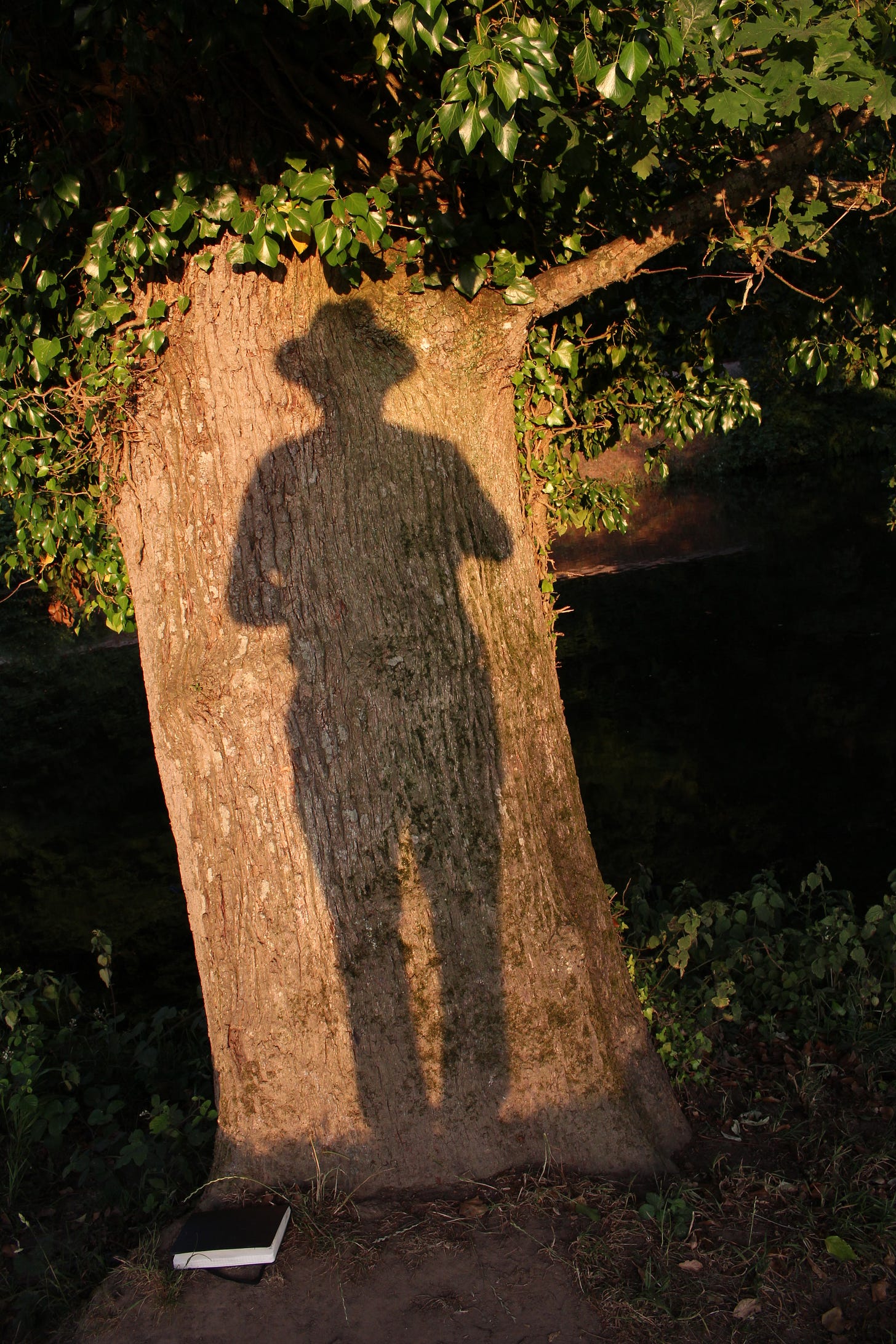Mitákuye Oyás’iŋ, as the Lakota prayer has it. All my relations. We live in a world of relationship. There are moments of grace when we recognise both human and more-than-human as kin
A panpsychic or animist world is alive. It is not only alive but sentient, full of meaning and poetic presence: some kind of innerness – mind, sentience, subjectivity – suffuses physical reality. This world seeks us out, even though in Western culture, humanity has monopolised the conversation; and capitalist economics depends on the exploitation of insentient, ‘brute’ matter. In consequence, that world of brute matter is largely what we modern humans experience. But the living world draws us back into its being, invites us to choose differently, to sing up a living presence. As we re-learn to do this, that world gestures in response: animals and birds appear; breeze ruffles the trees; rain falls on an otherwise dry day; all in ways that are apposite and synchronous with our invocation. For these ‘moments of grace’ are not random: they carry a deep experiential authenticity.
The Rainbow Dance
The Rainbow Dance was finished. For three days and nights, while the drummers sounded the rhythm, we danced up and down to the big tree at the centre of our circle, fasting all the while, making prayer for healing of ourselves and the Earth. The weather had been wild throughout the ceremony, with high winds and persistent rain, soaking our ceremonial robes and turning the dance ground into a muddy morass. By the end of the dance, we were tired and cold; but we could see the evidence of our efforts in the path each of us had worn from our place in the circle to the tree, feeling we had accomplished something sacred.
Now at last the sun had come out as we gathered around the sweat lodge that the ‘dog soldiers’ had constructed while we danced – blankets and tarps over a ‘bender’ frame of hazel branches. The rocks were heating on the fire. When the air above them was shimmering fiercely, it was time to enter the lodge. We took off our clothes and waited for directions from the Dance Chief. To my surprise, I was invited to enter first, to sit in the northeast, in the hottest place, next to the fire pit: the place of choreography of energy. As I crawled in through the low entrance, I whispered the words ‘All my relations’, a rough translation of the Lakota prayer Mitákuye Oyás’iŋ, which reflects the world view of interconnectedness.
‘We remember that all things are connected…’
‘We remember that all things are connected… this is the purpose of the ceremony,’ writes Chickasaw poet Linda Hogan, ‘It is part of healing and restoration... the mending of a broken connection between us and the rest… [T]he words “All my relations” create a relationship with other people, with animals, with the land’.[1]
This prayer has resonances in other traditions. A Buddhist would say, ‘Whatever merit I obtain through this sweat lodge ceremony I offer in the service of all beings’. And in the Christian tradition, Pope Francis ends his ecological encyclical, Laudato Si: ‘Give us the grace to feel profoundly joined/to everything that is’.
It was gloomy dark inside the lodge, the only light creeping in through the low doorway. I crawled round the perimeter to my place next to the still-empty fire pit, the ground soft and muddy under my knees, the smell of damp grass in my nose, feeling a nervous anticipation. From my place I watched my fellow celebrants as each in turn crawled, naked and vulnerable, through the low entrance.
It seemed that they were more than just physically naked, that each was leaving something of their everyday selves outside. I felt a surge of deep companionship, and as each crept in I honoured them, whispering to myself, ‘This is my sister, this is my brother, this is my sister, this is my brother…’ until we were all assembled, the hot rocks lowered into the firepit, and the door flap was closed. We sat together in the heat and darkness, the Dance Chief began the familiar sequence of prayers, and the sweat lodge ceremony began.
Oak Trees by the River Dart
I am walking along the River Dart at Dartington in Devon. Ancient oak trees line the bank, and I walk among them slowly, savouring each step, matching the pace of the river and the stillness of the summer evening. I stand aside, once as runners pound sweatily by, again for teenagers out partying – laughing, flirting, utterly absorbed with each other. Once they pass, the trees draw back my attention: their huge solid trunks; the leafy branches tumbling to the river; their reflections, dark and mysterious, on the water surface. I listen to the birdsong, to the insects buzzing around my head, to the occasional plops of animal movements in the river.
“The world is full of persons, on some of whom are human”
After a mile or so, I find a companionable trunk to lean against and sit until late, watching the midsummer sun drop behind the wooded hillside. Walking back along the bank, remembering the animist maxim, ‘The world is full of persons, only some of whom are human’,[2] I find myself drawn into that ancient meditation, acknowledging each tree in turn: ‘This is my brother, this is my sister; this is my brother, this is my sister’.
‘All my Relations’. I have dropped deeply into the world of trees.
[1] Hogan, L. (1995). Dwellings: A spiritual history of the living world. New York: Simon and Schuster, p.40.
[2] Harvey, G. (2017). Animism: Respecting the living world (Second ed.). London: Hurst and Company, p.33.






Thank you for the post. Every time I read an article of yours, I can feel the connective power to Nature stirring witin me. 🙏
This is beautiful. Thank you.